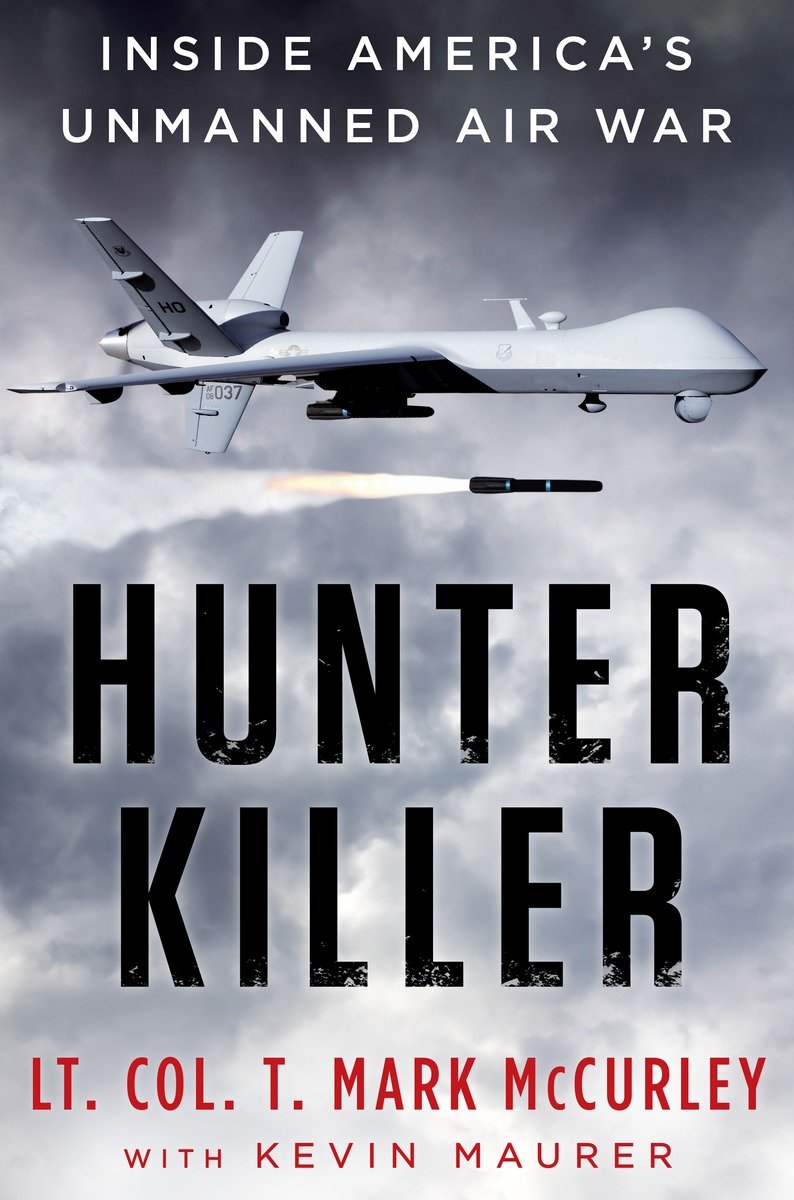
Hunter Killer
The True Story of the Drone Mission That Killed Anwar al-Awlaki
- اطلاعات
- نقد و بررسی
- دیدگاه کاربران
نقد و بررسی

July 15, 2015
An Air Force veteran tells an exciting tale of tracking terrorist leaders by remote piloted aircraft, the future of military aviation. The Predator was McCurley's craft of choice from 2003 through 2012, a drone (no longer so-called) once considered "an aviation backwater joke" and now regarded as the "spear in the war against terrorism." Flying an RPA is much like flying an airplane, except that the controls might be located in a command center at Camp Lemonnier, in Djibouti, while the actual aircraft might be operating in Yemen and tracking prime terrorist target Anwar al-Awlaki, as was the case for this pilot in September 2011. McCurley, aka Squirrel (his tactical call sign), learned how to fly the Predator in 2003, at the Creech Air Force Base in Nevada. Without the traditional feel of an aircraft in flight, and with the pilot unable to use his senses to monitor its performance, the Predator is more difficult to fly than a regular plane, and the pilot has to stick to systems, data, and controls. Eventually, McCurley's mission was to track terrorist convoys in Afghanistan and Iraq via the Predator and launch a missile attack. His account moves chronologically as he grew more confident as a mission commander and was assigned some high-profile targets-e.g., Iraqi leader al-Awlaki (mission accomplished). As this was the Predator's period of coming-out, McCurley provides a valuable record of both the RPA's effectiveness as well as the eerie, detached sensation the pilot feels when watching "the face of your enemy...staring back at you in high definition." The author ably chronicles the tedious, routine work involving "days drenched in blood," and he gives a good sense of the evolution of the RPA since the 1990s and the intensive human element necessary to command it. An illuminating tale of a pilot on the cutting edge.
COPYRIGHT(2015) Kirkus Reviews, ALL RIGHTS RESERVED.

Starred review from September 15, 2015
Retired lieutenant colonel McCurley's credentials are impeccable, having spent a decade flying Remotely Piloted Aircraft (RPA) and producing tactical manuals for them as well. His initial experience was at Creech Air Force Base in Nevada and his primary assignments stateside and abroad included drone strikes in Afghanistan and Iraq. The narrative moves chronologically as he gains experience, thereby earning him a place in missions with mixed results: the death of Anwar al-Awlaki, who incited the Boston Marathon bombers and the Fort Hood gunman; the dramatic rescue of Navy Seal Marcus Luttrell; and McCurley's early "fix" on Osama bin Laden near Tora Bora, only to lose his intended victim at the last minute to "political" considerations. McCurley completely documents the RPA's overall effectiveness, the challenges inherent in his capacity as a remote pilot without the advantages of an in-flight cockpit presence, the critical role of his sensor operator, the ambivalent feeling of killing one's distant enemy on a screen, the tedium of Predator compound life, and the lack of interaction between Predator pilots and regular U.S. troops. VERDICT A veteran's gritty, engrossing account of America's RPA service in today's far-flung conflicts. Recommended for all military personnel and historians, airpower and technology specialists, and public and academic libraries. [See Prepub Alert, 5/1/14.]--John Carver Edwards, formerly with Univ. of Georgia Libs.
Copyright 2015 Library Journal, LLC Used with permission.

May 1, 2014
More properly called remotely piloted aircraft (RPA), drones have figured significantly in Middle East warfare without our fully understanding how and why they were developed. McCurley has spent a decade flying RPA and wrote the first tactical manual for a type called the Predator. He's also been involved in Tier One counterterrorism missions, which makes this book not just background for understanding a contentious issue but a you-are-there war memoir.
Copyright 2014 Library Journal, LLC Used with permission.

September 15, 2015
Retired lieutenant colonel McCurley's credentials are impeccable, having spent a decade flying Remotely Piloted Aircraft (RPA) and producing tactical manuals for them as well. His initial experience was at Creech Air Force Base in Nevada and his primary assignments stateside and abroad included drone strikes in Afghanistan and Iraq. The narrative moves chronologically as he gains experience, thereby earning him a place in missions with mixed results: the death of Anwar al-Awlaki, who incited the Boston Marathon bombers and the Fort Hood gunman; the dramatic rescue of Navy Seal Marcus Luttrell; and McCurley's early "fix" on Osama bin Laden near Tora Bora, only to lose his intended victim at the last minute to "political" considerations. McCurley completely documents the RPA's overall effectiveness, the challenges inherent in his capacity as a remote pilot without the advantages of an in-flight cockpit presence, the critical role of his sensor operator, the ambivalent feeling of killing one's distant enemy on a screen, the tedium of Predator compound life, and the lack of interaction between Predator pilots and regular U.S. troops. VERDICT A veteran's gritty, engrossing account of America's RPA service in today's far-flung conflicts. Recommended for all military personnel and historians, airpower and technology specialists, and public and academic libraries. [See Prepub Alert, 5/1/14.]--John Carver Edwards, formerly with Univ. of Georgia Libs.
Copyright 2015 Library Journal, LLC Used with permission.




دیدگاه کاربران